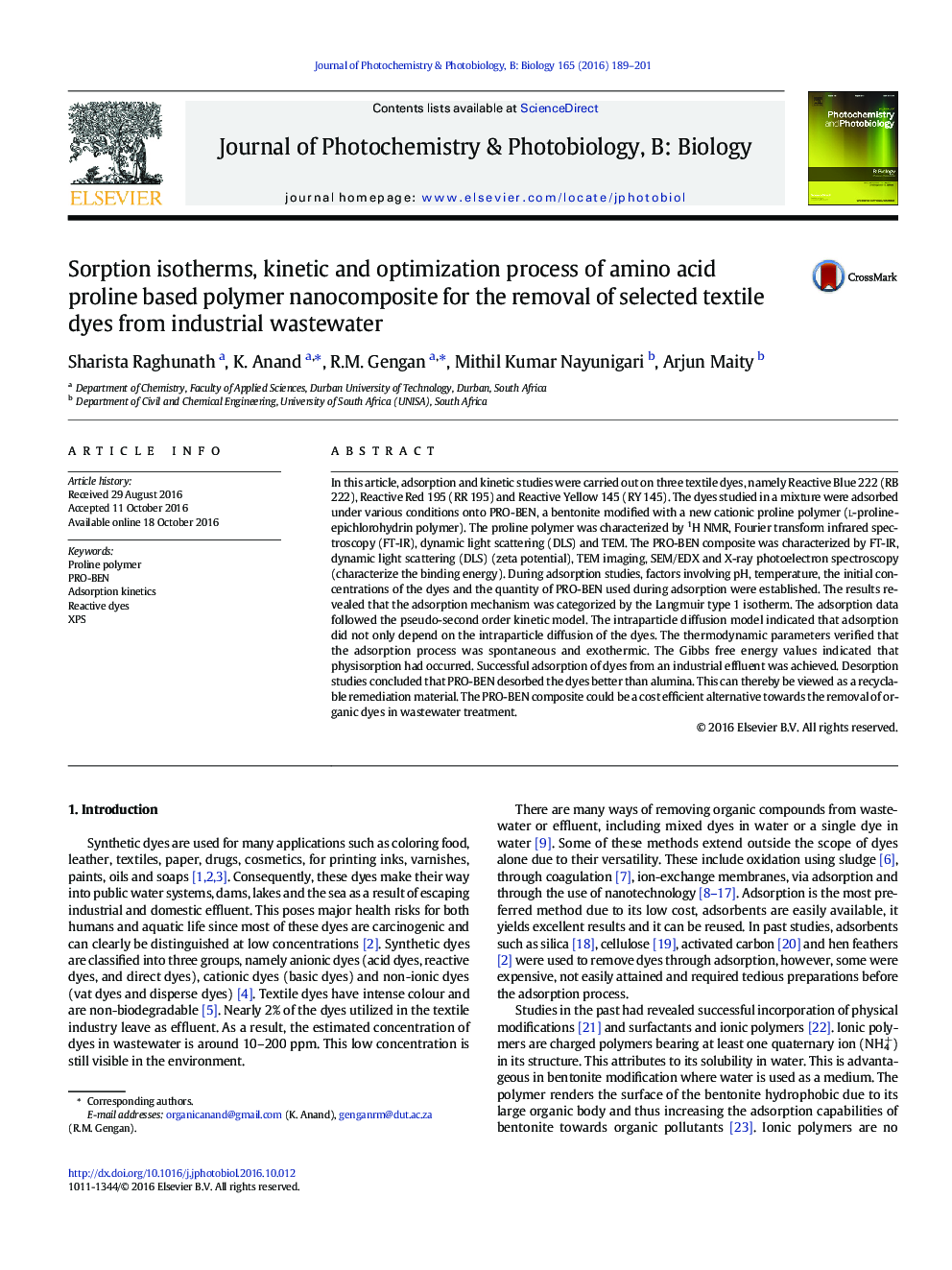| کد مقاله | کد نشریه | سال انتشار | مقاله انگلیسی | نسخه تمام متن |
|---|---|---|---|---|
| 6452591 | 1418068 | 2016 | 13 صفحه PDF | دانلود رایگان |
- Novel proline based polymer-bentonite successfully synthesized
- Characterization of PRO-BEN by using UV-vis, TEM, FTIR, DLS, SEM /EDX and XPS methods
- The Langmuir maximum adsorption capacity was 24.41, 25.84 and 28.31 mg/g for RB 222, RR 195 and RY 145, respectively.
- The PRO-BEN was applied to synthesized effluent and real effluent from a local textile industrial plant due to high zeta potential
In this article, adsorption and kinetic studies were carried out on three textile dyes, namely Reactive Blue 222 (RB 222), Reactive Red 195 (RR 195) and Reactive Yellow 145 (RY 145). The dyes studied in a mixture were adsorbed under various conditions onto PRO-BEN, a bentonite modified with a new cationic proline polymer (l-proline-epichlorohydrin polymer). The proline polymer was characterized by 1H NMR, Fourier transform infrared spectroscopy (FT-IR), dynamic light scattering (DLS) and TEM. The PRO-BEN composite was characterized by FT-IR, dynamic light scattering (DLS) (zeta potential), TEM imaging, SEM/EDX and X-ray photoelectron spectroscopy (characterize the binding energy). During adsorption studies, factors involving pH, temperature, the initial concentrations of the dyes and the quantity of PRO-BEN used during adsorption were established. The results revealed that the adsorption mechanism was categorized by the Langmuir type 1 isotherm. The adsorption data followed the pseudo-second order kinetic model. The intraparticle diffusion model indicated that adsorption did not only depend on the intraparticle diffusion of the dyes. The thermodynamic parameters verified that the adsorption process was spontaneous and exothermic. The Gibbs free energy values indicated that physisorption had occurred. Successful adsorption of dyes from an industrial effluent was achieved. Desorption studies concluded that PRO-BEN desorbed the dyes better than alumina. This can thereby be viewed as a recyclable remediation material. The PRO-BEN composite could be a cost efficient alternative towards the removal of organic dyes in wastewater treatment.
Graphical Abstract
Journal: Journal of Photochemistry and Photobiology B: Biology - Volume 165, December 2016, Pages 189-201
